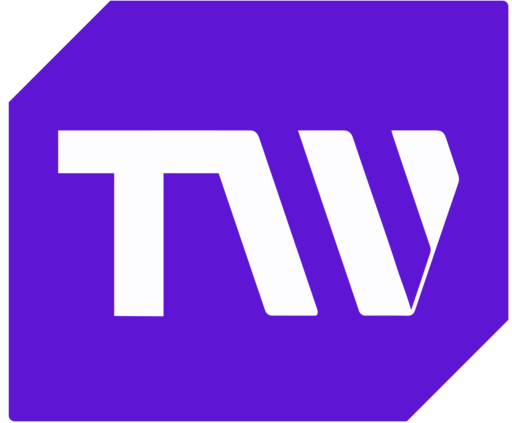Microsoft HoloLens 2 vs Apple Vision Pro: Which is a better buy?
Augmented Reality (AR) has evolved from science fiction to practical reality, blending digital content with our physical world. As AR headsets become more sophisticated, they’re also opening up new possibilities across various industries, including design, education, healthcare, and entertainment.
However, this market presents a challenge: not all headsets are created equal, and understanding the key differences between top devices is important. In this comparison, I examine two flagship AR headsets: HoloLens and Vision Pro, taking a look at their capabilities and performance to help you determine which one is best for you.
Microsoft’s HoloLens
Microsoft launched the HoloLens in 2016 as one of the first commercially available mixed reality headsets. Similar to other devices of its type, the HoloLens overlays digital content onto your real-world view, making virtual objects appear in locations within your physical environment. However, it does have some cool features that make it stand out.

Key Features of Microsoft’s HoloLens
- Voice Activation
You can navigate and control the device through spoken instructions, which is particularly handy during hands-on tasks or when gesture control is impractical.
- Gesture Recognition
HoloLens recognizes natural hand movements, enabling users to interact with holograms through intuitive gestures such as pinching, grasping, and pointing.
- Eye Tracking
The device accurately tracks eye movements, which helps it understand intentions and adapt the hologram to align with your gaze in real-time.
- Spatial Mapping
With spatial mapping, HoloLens effortlessly maps surroundings. This feature enables digital content to be anchored to various objects or surfaces regardless of location.
- Enhanced Field of View
The HoloLens 2 offers double the field of view compared to its predecessor, providing more immersive mixed reality experiences with better peripheral vision.
Pros and Cons of Microsoft HoloLens
Pros
- Excellent tracking of surroundings and hand movements
- Wide viewing area for better mixed reality experiences
- Strong software support and development tools
Cons
- Expensive compared to other headsets
- The battery doesn’t last long, and it has limited processing power
Vision Pro AR Headset
Eight years after the launch of the HoloLens, Apple released the Vision Pro in February 2024 as the company’s first mixed reality headset. Likewise, it combines digital content with the real world, focusing on high-quality displays and easy controls. Apple also designed the Vision Pro to work seamlessly with its other products and services, making another powerful addition to the brand’s ecosystem.

Key Features of Vision Pro AR Headset
- Digital Crown Control
The Vision Pro has a dial (like on Apple Watch) that lets you control how much virtual content you see. You can blend digital objects with your real surroundings or become fully immersed in virtual environments.
- Eye Tracking Navigation
You can control the headset just by looking at things. Your eyes work like a computer mouse – whatever you look at gets selected. This makes navigation feel natural and hands-free.
- Hand Gesture Controls
Apple takes an uncommon approach to controlling Vision Pro’s interface. You can tap, pinch, and swipe in the air to control the interface. No need for handheld controllers as your ‘actual’ hands do all the work. This makes interactions feel more natural.
- See-Through Display
When someone approaches you, the front screen shows your eyes to the other individual. This helps maintain eye contact and makes conversations feel more normal while wearing the headset.
- 3D Video Calls
FaceTime calls appear as floating windows around you. You can move and resize these windows, and other people appear as realistic avatars in your space.
Pros and Cons of Vision Pro Headset
Pros
- High-quality displays with sharp, clear images
- Works well with other Apple devices
- Comfortable to wear for longer periods
Cons
- Very expensive ($3,499 starting price)
- Limited app selection compared to other platforms
- Heavy weight can cause discomfort during extended use
When choosing between leading mixed reality headsets, understanding the technical differences and design approaches helps determine which device best fits your needs. Here’s how these two flagship devices compare:
- Display Quality and Resolution
HoloLens 2 delivers sharp visuals through its transparent lenses, maintaining clear spatial awareness while displaying digital content. The see-through design minimizes distortion, though brightness can be challenging in well-lit environments. Vision Pro takes a different approach with dual 4K micro-OLED displays that offer exceptional clarity and color accuracy, though this comes with complete visual isolation from your surroundings.
- Field of View (FOV) Comparison
HoloLens 2 provides a 52-degree diagonal field of view, which was a significant improvement over the original HoloLens. However, Vision Pro offers a wider field of view that feels more natural and less like looking through a small window. The difference becomes noticeable during extended use, where Vision Pro’s broader viewing area reduces the feeling of tunnel vision.
- Tracking Accuracy and Precision
Both devices excel in tracking, but through different methods. HoloLens 2 uses inside-out tracking with multiple sensors to map environments and track hand movements with impressive precision. Vision Pro combines eye tracking, hand tracking, and environmental mapping using cameras and sensors. In practice, both systems work reliably, though HoloLens performs better in complex industrial environments.
- Comfort and Ergonomics
HoloLens 2 distributes weight across the head with an adjustable halo design, making it comfortable for 2-3 hour sessions. The front-heavy design can cause neck strain during extended use. Vision Pro, despite being heavier overall, balances weight better between the front display and rear. However, the external battery pack can limit mobility.
- Battery Life and Portability
HoloLens 2 offers 2-3 hours of continuous use with its battery and maintains true portability without external power sources. Vision Pro provides approximately 2 hours of use but requires an external battery pack connected by cable. While Vision Pro’s battery is replaceable, the tethered design limits movement.
- Performance and User Experience
HoloLens 2 operates on a custom Holographic Processing Unit that efficiently handles spatial computing, although its processing power is limited compared to modern smartphones. Vision Pro leverages Apple’s M2 chip, delivering desktop-class performance with smooth animations and minimal latency. The performance difference is most noticeable when running complex applications or multitasking.
- User Interface Experience
HoloLens 2 relies on air-tap gestures, voice commands, and gaze-based selection. The interface appears to be designed for productivity and professional use, although it may feel outdated compared to modern touch interfaces. Vision Pro uses eye tracking for navigation combined with pinch gestures, creating an interface that feels more familiar for iOS users.
| S/N | Specification | Microsoft HoloLens 2 | Apple Vision Pro |
| 1 | Display | Transparent holographic lenses with up to 60Hz refresh rate | Micro-OLED displays with up to 100Hz refresh rate |
| 2 | Resolution | 2K light engines | 4K for each eye |
| 3 | Processor | Qualcomm Snapdragon 850 and Second-generation custom-built holographic processing unit | Apple M2 and R1chip |
| 4 | RAM | 4-GB LPDDR4x System DRAM | 16GB |
| 5 | Storage | 64GB UFS 2.1 | 256GB, 512GB, 1TB |
| 6 | Input | Hand and eye tracking, voice | Hand and eye tracking, voice |
| 7 | Authentication System | Windows Hello based on Iris recognition | Optic ID based on Iris recognition |
| 8 | Cameras | Four grayscale camerasEye tracking: 2IR cameras | 12 high-resolution color camerasEye tracking: 4 IR cameras |
| 9 | Sensors | 1-MP time-of-flight depth sensor, Accelerometer, Gyroscope, Magnetometer | Accelerometer, Gyroscope, Magnetometer, LiDAR, and TrueDepth |
| 10 | Speaker | Spatial sound | Two amplified drivers inside each audio pod deliver personalized spatial sound |
| 11 | Microphones | Five channel microphones | Six microphones |
| 12 | Battery Life | 2-3 hours using in-built battery | Up to 2 hours with an external battery pack |
| 13 | Weight | 566 grams | 600-650 grams |
| 14 | OS | Windows Holographic | VisionOS |
| 15 | Release year | 2019 | 2024 |
| 16 | Price | 3500 US Dollars | 3500 US Dollars |
Some Use Cases of VR Headsets
VR headsets have found practical applications across many industries, transforming how professionals work, train, and collaborate. Here are some key ways these devices are being used in real-world scenarios:
Healthcare: Doctors use VR headsets to plan surgeries and train medical students. They can see 3D images of patient scans while operating.
Education: Teachers create interactive lessons that allow students to touch and manipulate 3D objects. Students can also take virtual trips to museums or historical places.
Architecture and Design: Architects show clients what buildings will look like before they’re built. Teams can work together on designs even when they’re in different locations.
Manufacturing: Experts can help workers remotely repair machines by guiding them through the headset, showing exactly what to do. Quality checks become easier with digital guides.
Training: Workers can practice dangerous jobs safely using realistic simulations. This includes tasks such as equipment repair and emergency procedures.
Retail and Marketing: Customers can try on clothes or see how furniture looks in their homes without physically having the items. Stores can guide shoppers with interactive maps.
Military: Soldiers use HoloLens for training exercises and mission planning. It helps them prepare for real situations in a safe environment.
Remote Work: Teams can work on projects together even when they’re in different cities. They can see and move the same 3D objects simultaneously.
Verdict
The choice between HoloLens 2 and Vision Pro depends on intended use rather than budget, as both are expensive devices. HoloLens 2 excels in professional environments where mixed reality and mobility matter most. I’ll classify these as manufacturing, healthcare, and field service applications. Vision Pro, on the other hand, offers superior visual quality and user-friendly interfaces, making it better suited for creative work and entertainment. Neither device is entirely ready for mainstream adoption, but both represent different visions of how mixed reality will evolve.


